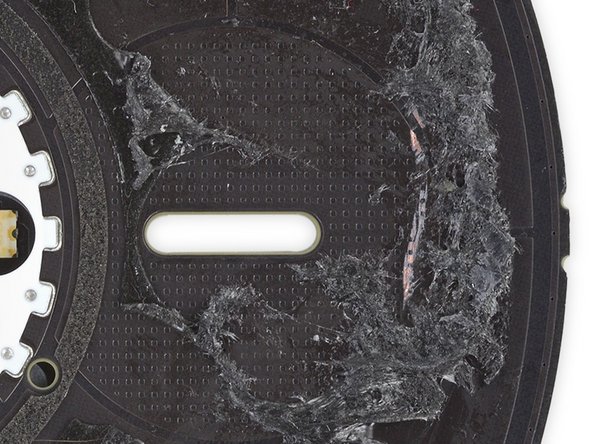crwdns2935425:010crwdne2935425:0
crwdns2931653:010crwdne2931653:0






-
De-shielding that board shows us some of the fun that's running the light show up top:
-
Texas Instruments TLC5971 LED driver
-
Cypress CY8C4245LQI-483 Programmable System-on-Chip, likely tasked with touch control
-
ON Semiconductor FPF1039 slew-rate-controlled load switch
-
Texas Instruments TPS62135 4 A step-down converter
-
The flip side of the board houses the LEDs and the diffuser that gives the indicator its cloudy look.
-
The top side of the board (second photo) sports a neatly organized pattern of tiny divots—possibly a capacitive grid, like on the Google Home, for registering your taps and touches on the surface above.
| [* black] De-shielding that board shows us some of the fun that's running the light show up top: | |
| - | [* red] Texas Instruments [http://www.ti.com/product/TLC5971/datasheet/abstract#SBVS1465350| |
| + | [* red] Texas Instruments [http://www.ti.com/product/TLC5971/datasheet/abstract#SBVS1465350|TLC5971|new_window=true] LED driver |
| [* orange] Cypress [http://www.cypress.com/file/138656/download|CY8C4245LQI-483|new_window=true] Programmable System-on-Chip, likely tasked with touch control | |
| + | [* yellow] ON Semiconductor [link|https://www.onsemi.com/products/power-management/load-switches/fpf1039|FPF1039] slew-rate-controlled load switch |
| + | [* green] Texas Instruments [link|https://www.ti.com/product/TPS62135|TPS62135] 4 A step-down converter |
| [* black] The flip side of the board houses the LEDs and the diffuser that gives the indicator its cloudy look. | |
| [* icon_note] The plus and minus symbols are cut straight through the board, and each has its own little triad of LEDs plus a light guide to aim the photons where they're needed most. | |
| [* black] The top side of the board (second photo) sports a neatly organized pattern of tiny divots—possibly a capacitive grid, [guide|72684|like on the Google Home|stepid=145457|new_window=true], for registering your taps and touches on the surface above. |
crwdns2944171:0crwdnd2944171:0crwdnd2944171:0crwdnd2944171:0crwdne2944171:0